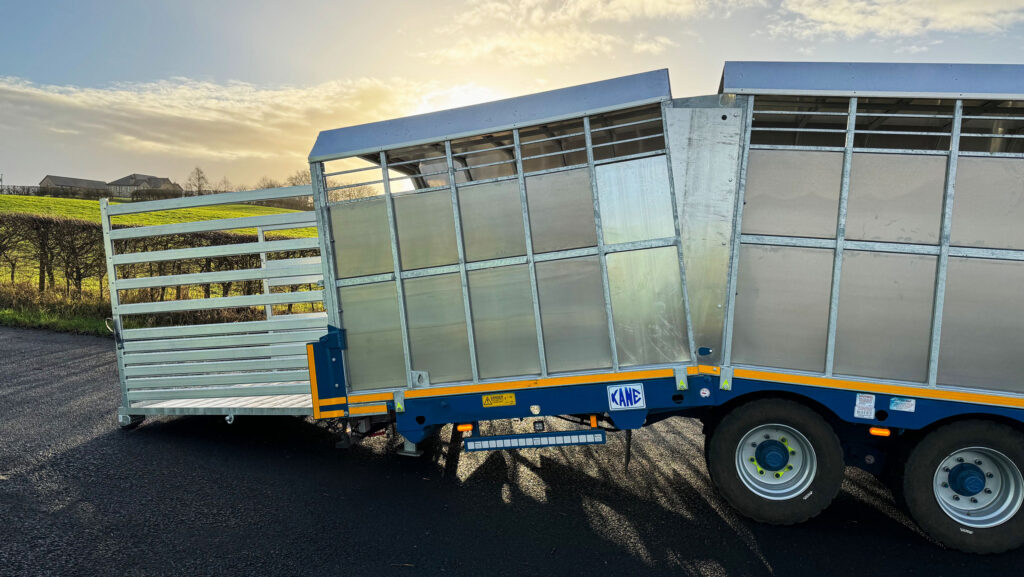Home-built beavertail cattle trailer offers easy loading
 © James McKeown
© James McKeown Having baulked at the price of ready-made cattle boxes, County Antrim dairy farmer James McKeown built a custom removable body to fit on his Kane beavertail.
Not only did this trailer provide a far tougher chassis than most dedicated livestock haulers, but the combination of beavertail and a fold-down tailgate allowed him to create a particularly shallow loading ramp.
“A steep lorry ramp is OK for older cattle, but it can be a real struggle with youngstock – even some older beasts will look at the slope and jump, landing halfway down the ramp,” he says.
See also: Buyer’s guide: 4×4-towed livestock trailers – 7 options
His combination avoids this problem by offering a continuous slope of 20deg or less, which is similar to that of a tailgate on a 4×4-drawn stock box.
Fabricating a body to fit on a regular flatbed trailer might be a simple enough task, but making one that hinges with a beavertail is another story.
Tough triangular side plates are one of the secrets to James’ design.
These act as both a guide when the rear section moves and as a fillet to bridge the gap in the bodywork when it’s in the lowered position.
Careful thought has also gone into the roof, with the rear section tucking neatly under the front.
The aluminium chequer-plate floor plays its part, with a sprung section that expands and contracts during lowering and raising.
Other notable features include a slurry trap at the rear and remote hydraulic folding system for the beavertail and tailgate.
This setup was built with the help of HGV specialist AIR, which also put the wiring together.
Long body
The 28ft body is constructed out of a galvanised steel box-section frame clad with aluminium panels.
Flat sections are used for the side panels, with folded profiles for the roof and floor, all of which were produced by local firm ASF Engineering.
Rubber sheets have also been fixed to the Kane metal-and-wood floor to act as sound deadening when the box is bolted in place.
Easy removal has been incorporated into the design with four slot-in jacks that allow the body to be lifted clear of the beavertail, ready for it to be driven away – a job that takes about 15min.
The only prep required for this is to undo 10 bolts and insert four heavy-duty locking pins that shackle the front and rear sections together.
James has patented his hinged stock box design and is looking for a manufacturing partner to put it into production. If this happens, the price is likely to be about £15,000.

